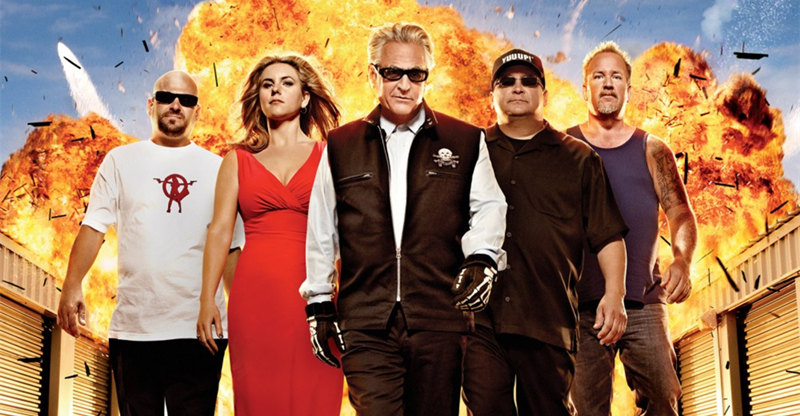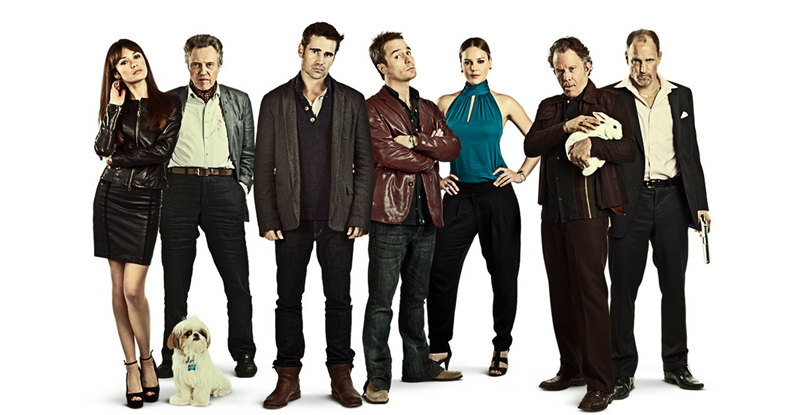I’m one of those who reads a movie title like it’s a headline, and the tagline as if it were a subhead. So initially the cover packaging for “Made in America” made no sense to me: “Dream It. Do It.” That’s because “Made in America” looks like a concert video, and concert videos usually have a blend of backstage shots and performance footage, don’t they? So why would this film by Jay Z and Ron Howard be any different?
Funnily enough, it IS different, and once you watch this film about the annual Budweiser Made in America Festival in Philadelphia you understand exactly what the tagline means. “Made in America” is a celebration of both the unifying power of music and the pursuit of the American dream—whether that dream is Jay Z’s vision of a concert that would bring people together in his native Philly, the performers on stage who’ve made it and share stories of what it was like when they were struggling, hopeful performers waiting for a chance to perform on a giant stage like this, or food vendors hoping to upgrade to a better truck if this concert pays off. Dream it. Do it.
This festival documentary produced by Brian Grazer and Jay Z and directed by Howard was intended as “a reflection of the fabric of what it means to be ‘Made in America’—what the festival represents, why Jay is doing it and how he relates to each artist,” according to Howard.
Eighty thousand people attended the first festival in 2012, which featured such disparate talents as Pearl Jam, Run-D.M.C., Rita Ora, Santigold, Kanye West, Gary Clark Jr., D’Angelo, Dirty Projectors, The Hives, Miike Snow, Janelle Monae, Odd Future, Passion Pit, Jill Scott, and Skrillex.
There’s almost nonstop music, but very few songs are performed in their entirety, and if they are they blend into the background as the camera moves around the festival and we hear from performers and those who work behind the scenes. No audience members are interviewed, but there are plenty of crowd shots. This isn’t a fan movie. It’s an inspirational one, especially for the leagues of young people who see performers in action and wish that they too could have a career in entertainment and a platform for their causes.
“Politics has become like bad weather, and people deserve clear skies”—Eddie Vedder
Every single performer interviewed—and who knows, maybe this is why some acts that performed at the 2012 festival didn’t make it into the film—had a fascinating story about following his/her dream and making it in America. The most memorable interview comes from Janelle Monáe, who says she only wears black and white onstage because it’s her “uniform,” and it reminds her of the uniforms her hard-working mother and father and she herself donned as a maid. Now she’s a star, and “Made in America” includes young people who are cast as amateur talent but then told they can’t perform after all . . . then they DO get to perform.
Howard and film editor Joshua L. Pearson do an excellent job of crafting a collage that allows for near-continuous music but also keeps the theme of “dreaming it and doing it” juggling from person to person, like balls in the air.
“Music succeeds where politics and religion fail”—Darryl “D.M.C.” McDaniels
Howard isn’t interested in making a concert video OR a behind-the-scenes story of a festival. You get both, but in an atmospheric way, a way that enables the director to get at what he thought was a more essential story—or rather, the many stories overlapping here that attest to everyone out there who has a dream of his/her own that the American dream is still possible. The economy has been in the toilet for decades, the gap between the rich and the poor has widened, the middle class has eroded, but it’s still possible to somehow make it . . . though it would be nice if the government did something to help the little person, for a change. That’s one message in “Made in America.” The other is cultural diversity and acceptance, and though Jay Z can get a bit preachy at times, the festival he founded and the director he engaged manage to drive home this point as well. As a festival it seems more the norm than the exception, but the angle Howard takes—“Dream It. Do It.”—makes it stand out.
There’s comic relief, too, as Howard brings food and drink to a crusty older woman who lives within sight and earshot of the stage, and her complaints about the “bang-bang” music and the tight close-up of her are the stuff of memes. We see a lot of a woman who loses $1000 in sandwiches because of the heat and ride her roller coaster as she dips back up again to nudge closer to her financial goal. It’s these little juxtapositions that give texture to the film and make it more than just a concert video or a standard music documentary.
“Made in America” has a runtime of 93 minutes and, though not rated, would merit an R for explicit lyrics and language.
Video:
“Made in America” is presented in 1.78:1 aspect ration, “enhanced” for 16×9 monitors. As you might expect it’s a high-quality production that sports a terrific amount of detail whether the stage is lit by natural light or cell phones from the audience. There’s no quality gap between the performance clips and the interview clips or behind-the-scenes sequences.
Audio:
The audio is an English Dolby Digital 5.1 Surround, with English SDH subtitles and a sound that’s pure and dynamic. Bass is full and rich, and even street and audience shots have a cleanness that you don’t usually find in crowd-filled exterior shots. There’s ambient noise, certainly, but even that seems crisp.
Extras:
There are no bonus features.
Bottom line:
“Made in America” is a hybrid sort of film. Fans of concert videos who buy this Blu-ray may be disappointed that there isn’t a concert flow to the film, and that there isn’t more continuous focus on the stage performances from start to finish. And people who buy this Blu-ray because they want the inside scoop on how this music festival began or what specifically makes it work may also be disappointed. “Made in America” is a documentary and a message film, and while music doesn’t take a back seat, it’s more of a passenger than a driver. It feels like nonstop music without the generic concert format. But you learn or intuit something in the process.


